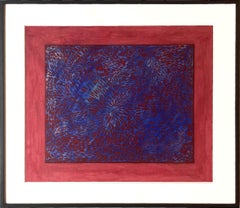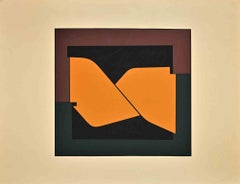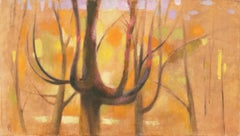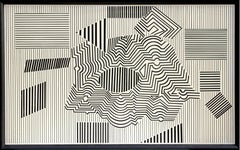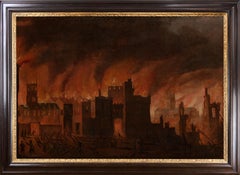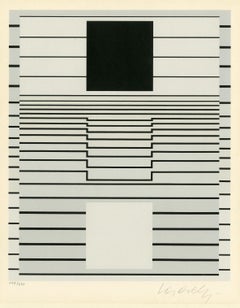Op Art
The Op art movement emerged in the 1960s, mirroring the counterculture of the time in its embrace of visual trickery, graphic shapes and bright colors.
Spreading across Europe and the Americas, the style — whose name is short for “optical art” — influenced advertising, fashion and interior design before fading in the early ’70s.
Op art remained significant, however, for artists and scientists interested in the nature of perception. And today, it’s seeing a resurgence of interest from collectors and interior designers.
Op artists played with the principles of perception, manipulating line, shape, patterns and color to create the illusion of depth and movement. They drew on and evolved methods developed by past movements, from Impressionism to Abstract Expressionism, to produce intense visual experiences.
All the Op artists shared a focus on the gap between what is and what we perceive. Each, however, had a distinct approach to the issue and a unique visual style.
On 1stDibs, find a collection of Op art that includes works by Josef Albers, Bridget Riley, Jesús Rafael Soto and more.
1950s Op Art
Watercolor, Gouache, Mixed Media
1950s Op Art
Screen
1950s Op Art
Canvas, Oil
1950s Op Art
Acrylic
1990s Op Art
Screen
17th Century Op Art
Oil, Canvas
2010s Op Art
Gold Leaf
Late 20th Century Op Art
Canvas, Acrylic
1970s Op Art
Mixed Media, Archival Paper, Gouache, Color Pencil
1970s Op Art
Paper, Gouache
1970s Op Art
Paper, Gouache
2010s Op Art
Acrylic, Watercolor, Gouache, Archival Paper, Archival Ink
2010s Op Art
Gouache, Archival Paper
2010s Op Art
Canvas, Acrylic, Oil
2010s Op Art
Birch, Wood Panel, Pen
Mid-20th Century Op Art
Paper, Screen
1950s Op Art
Screen
1950s Op Art
Screen
1950s Op Art
Screen
1950s Op Art
Oil
